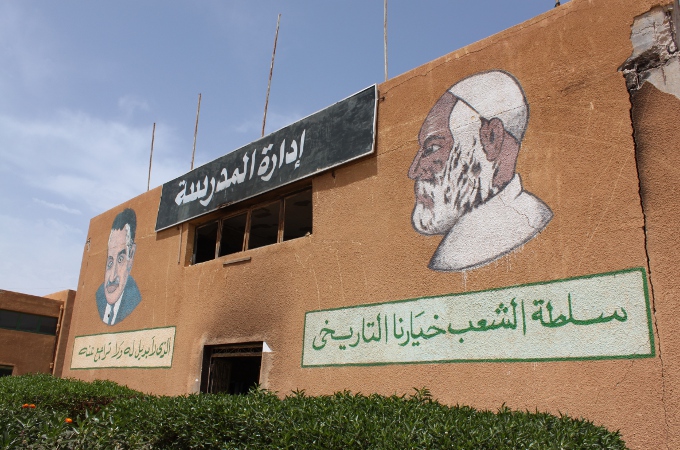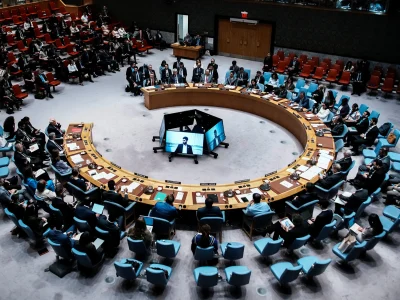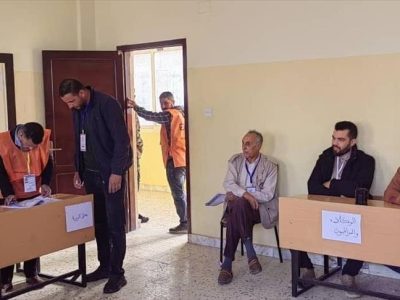Libya Education and Workforce Training: Building a Skilled Future
Libya’s oil dependence and large public sector have left its workforce underused and its schools lagging behind modern needs. Oil and gas still dominate Libya’s output and revenue – accounting for roughly 60% of GDP and 97% of government income – yet the hydrocarbon sector employs only a small fraction of the workforce. Meanwhile, an estimated 70% of working Libyans hold public-sector jobs, a legacy of state-dominated employment that crowds out private enterprise. Conflict and underinvestment have eroded human capital, leaving outdated schools that fuel skill gaps and joblessness. Libya’s youth unemployment rate is over 50%, one of the highest in the, even as employers often struggle to find candidates with the practical skills needed in a private-sector workplace. This paradox underscores an urgent need to rebuild and modernize Libya’s education and workforce training systems. Investing in human capital – through education reform, vocational training, and partnerships – can empower Libyans to drive new industries and reduce overreliance on oil revenues and government jobs.

Education and Labor Market Challenges
For years, Libyan employers have noted a persistent disconnect between the output of the education system and the needs of the economy. The curriculum has historically emphasized theory over practice, leaving many graduates ill-prepared for the modern workplace. Many graduates leave school without essential language, math, computer, or industry-specific skills. Surveys show major gaps: 41% of youth need better reading skills and 50% lack English proficiency, both vital in a diversified economy. These skill deficits contribute directly to Libya’s employment crisis. Meanwhile, many construction, trade, and IT jobs go to expatriates while nearly half of Libyan youth remain jobless. Education–labor mismatches and public hiring norms push graduates toward government jobs instead of private-sector growth.
A major part of the problem lies in technical and vocational education and training (TVET), which has been under-resourced and undervalued. Libya’s vocational training system suffers from outdated curricula, insufficient equipment, and a fragmentation of oversight between different ministries. Employers often perceive vocational graduates as lacking job-ready skills, and many families have steered youth toward academic university degrees rather than technical tracks. Stigma, weak capacity, and poor industry links have stalled the growth of a skilled workforce. Experts note that Libya’s TVET institutions need significant upgrades in quality and relevance, including aligning training programs with market needs, improving instructors’ technical capacity, and changing public perceptions of vocational careers. Without robust vocational pathways producing technicians, artisans, and mid-level professionals, the economy has struggled to diversify beyond oil. The result is a labor market where local businesses cannot find the skills they require, even as thousands of Libyan graduates seek work in fields unrelated to their studies.
Modernizing Education for a Diversified Economy
Policymakers and educators increasingly recognize that modernizing Libya’s education system is critical for economic renewal. Reforms aim to modernize curricula with practical skills, problem-solving, digital literacy, and entrepreneurship. The Ministry of Education has pledged to reform curricula and programs with a focus on life skills, technology, and vocational content. For example, new curriculum plans aim to integrate topics such as environmental sustainability, climate change awareness, and the basics of business and the green economy alongside traditional subjects. There is also a push to improve teaching quality by investing in continuous professional development for educators, training teachers in modern pedagogical methods, active learning strategies, and digital instruction techniques. These steps are intended to make learning more relevant to real-world challenges and to better prepare students for employment outside the public sector.
In tandem with curriculum reform, Libya is exploring digital innovation to leapfrog some infrastructural constraints. With support from international partners, the country has introduced new e-learning platforms and data systems to broaden access to quality education. Notably, UNICEF helped launch an Education Management Information System (EMIS) and the “Learning Passport” digital platform to provide inclusive online learning opportunities for Libyan children and youth. These tools address gaps from conflict and geography by enabling remote learning, progress tracking, and digital resources. Embracing educational technology and distance learning can especially benefit students in underserved regions and those whose schooling was disrupted, ensuring that human capital development continues even amid instability.
Equally important is reinvigorating vocational and technical training to meet Libya’s diversification needs. Revamping the TVET system will require updating equipment and facilities, overhauling curricula, and forging much closer links with industry. Experts urge stronger public–private training ties, such as co-designed courses and apprenticeships. These partnerships can ensure that graduates acquire the specific skills that local employers seek, whether in automotive mechanics, electrical trades, agriculture, or information technology. Focusing on emerging growth sectors could yield especially high returns. Libya has significant potential in areas such as digital technology, software engineering, health care, construction and infrastructure, renewable energy, and food processing – sectors which could expand the economy and create jobs if the talent is available. Producing more technicians, engineers, and skilled workers in these fields would help the private sector grow beyond oil and gas. Additionally, educators are looking to nurture entrepreneurship among young Libyans as part of the learning process. This means imparting business and financial skills, and providing programs that encourage youth innovation and startups. By teaching entrepreneurship and even offering incubation support, schools and universities can empower graduates to create their own opportunities rather than relying solely on public employment. Such a holistic modernization – spanning academic education, vocational skills, digital learning, and entrepreneurship – would greatly improve the readiness of Libya’s workforce for a diversified, private-sector-led economy.
Partnerships and Investment for Human Capital Development
These reforms demand sustained national commitment and cooperation. The government must lead with a coherent national strategy for human capital development – something observers note has been lacking in the past – and devote sufficient resources to implement changes at scale. Greater coordination is needed between the education system and economic planners so that training programs align with the country’s development priorities. Crucially, the state’s role in the labor market needs to shift from being the primary employer to being an enabler of private-sector growth. Instead of hiring most graduates, the state should support private job creation through business partnerships and better hiring conditions. For example, public agencies can work with industry associations to continuously update curriculum standards, sponsor internship programs, and certify skills in line with international benchmarks. Harnessing public-private partnerships in training and education will allow Libya to leverage the expertise and agility of the private sector. Global experience shows such partnerships shift the state into a regulator role, promoting private-led growth. Over time, this would shift employment from the state to a thriving private sector, with graduates ready to succeed there.
Libya is not undertaking this journey alone. International partners and organizations have stepped forward to support the rebuilding of Libya’s education and training capacity. The European Union, for instance, launched an EU4Skills initiative to strengthen the quality of higher education and vocational training across Libya, working with key ministries, universities, and employers. Such programs provide expertise and funding to make Libyan institutions more responsive to labor needs. UNICEF and UNESCO support policy, teacher training, and digital learning in coordination with Libyan authorities. The World Bank and bilateral donors have established trust funds and analytical projects to aid Libya’s recovery, emphasizing that external support is essential for a path toward sustainable development in a country with limited current capacity. International partnerships provide resources and align Libya’s reforms with global best practices. They also promote coordination: for example, multi-donor trust funds enable better planning and consistency in rebuilding efforts, whether rehabilitating schools or setting up job-placement services.
Ultimately, investing in education and workforce training is not just a social priority for Libya – it is an economic imperative. Strengthening human capital will help Libya unlock the potential of its young population and spur the expansion of non-oil industries. A more skilled and adaptable workforce can attract investment, improve productivity, and enable Libyan entrepreneurs and firms to seize new opportunities. Over time, this will reduce the overreliance on public employment and hydrocarbon rents, fostering a more balanced and resilient economy. By rebuilding its education system and modernizing training, Libya can lay the groundwork for sustainable development driven by its people’s talents and initiative. In a future where oil revenues are less dominant, it is the knowledge, skills, and creativity of Libyans that will drive prosperity – making human capital the cornerstone of Libya’s economic diversification and private-sector growth.




